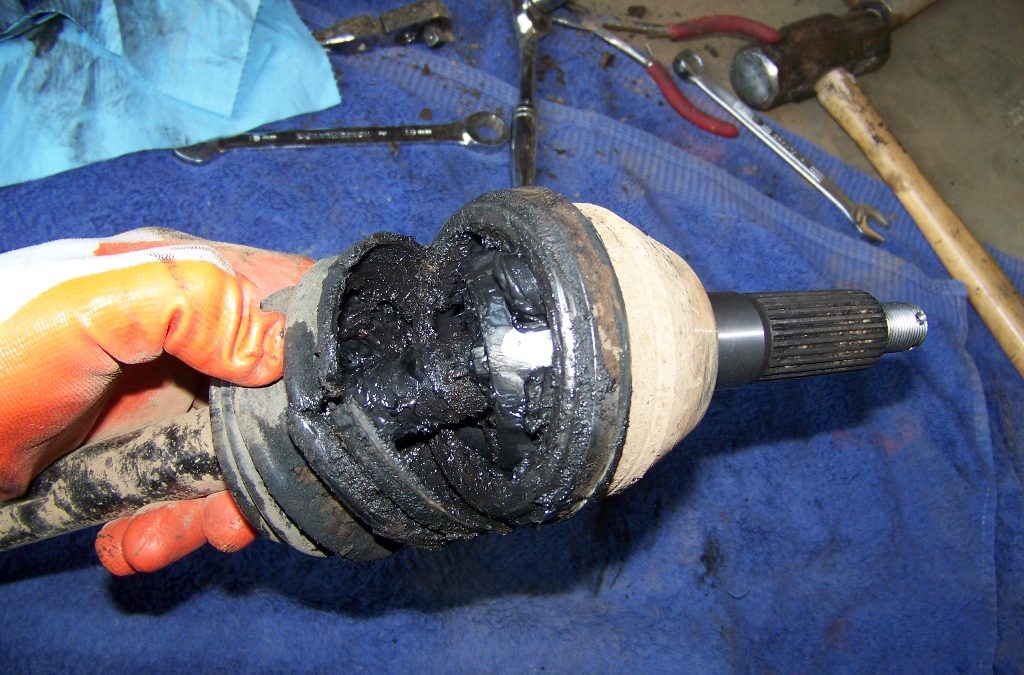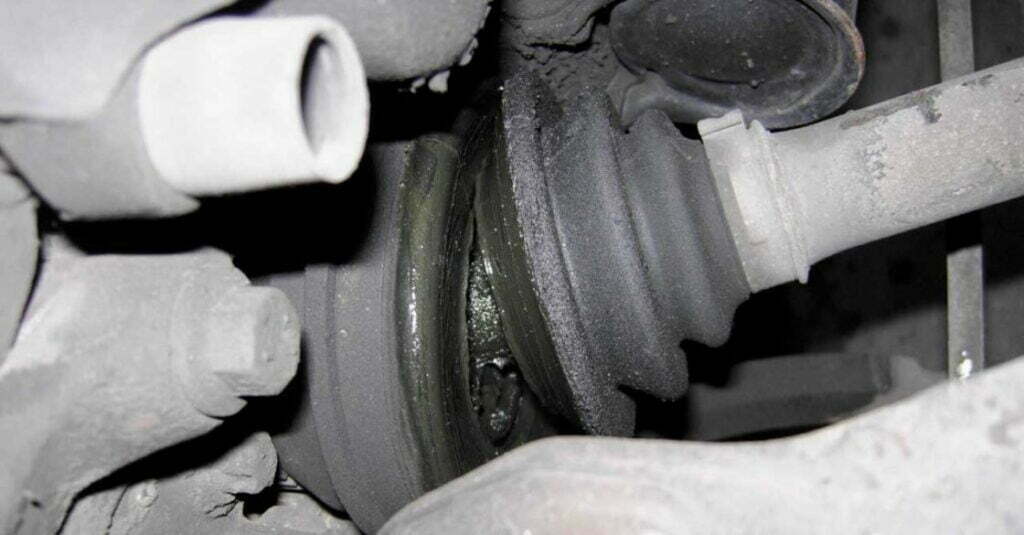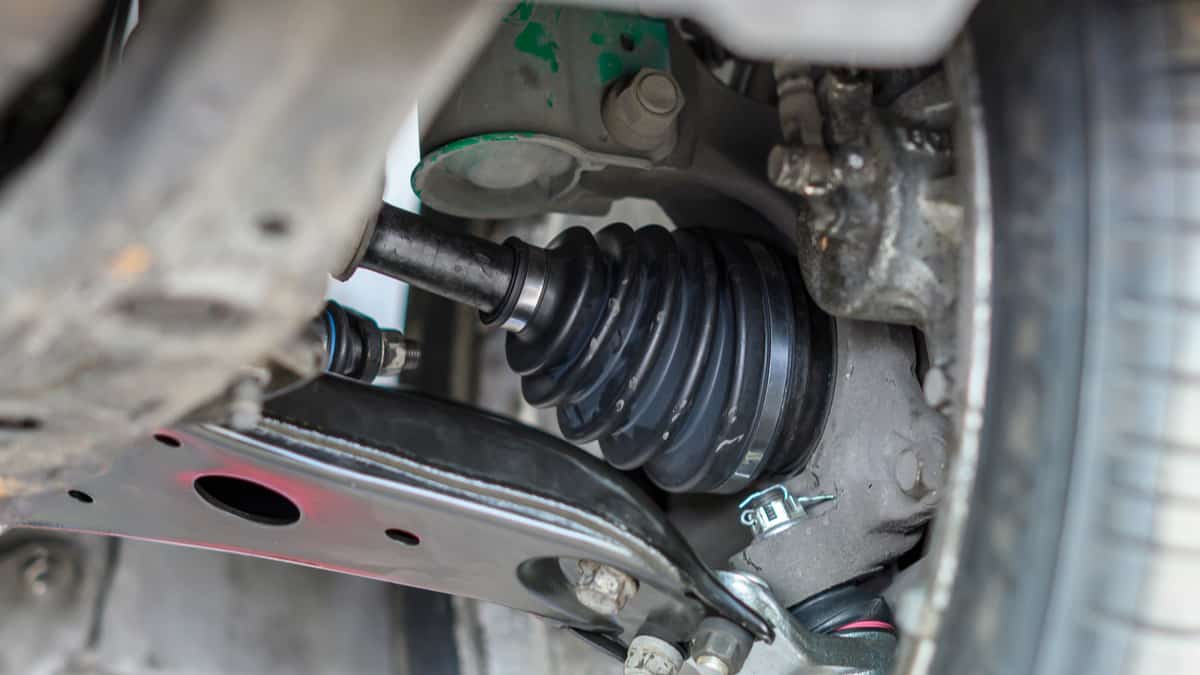The CV joint is an essential component of a vehicle’s suspension system, allowing the wheels to move up and down and rotate as the vehicle moves. However, when the CV joint starts to produce noises while the vehicle is driving straight, this can be a cause for concern. In this article, we will explore the possible causes of CV joint noise when driving straight, as well as how to fix it.
We will also discuss the importance of regular maintenance and the potential consequences of ignoring the problem. By the end of this article, you will have a better understanding of this common issue and how to address it.
What is a CV Joint and How does it work
A CV joint (short for constant velocity joint) is a mechanical device that allows two connected parts to rotate at different speeds while maintaining a constant rotational velocity. This is typically used in front-wheel drive vehicles, where the wheels need to be able to turn at different speeds (for example, when turning a corner) but the drivetrain needs to maintain a constant speed. CV joints are typically encased in a protective rubber boot, which keeps lubricating grease inside the joint and contaminants such as dirt and water out.
Where does CV Joint locate?
A CV joint is typically located on the drive axles of a front-wheel drive vehicle. The joint is responsible for transmitting power from the vehicle’s transmission to the drive wheels, while allowing for the necessary up-and-down movement of the suspension. Some CV joints may be located on the front wheels of a rear-wheel drive vehicle, where they help to transmit power from the driveshaft to the front wheels.
Causes Of CV Joints Noises
Defective CV boots

One of the main causes of noise coming from CV joints is due to defective CV boots. When the CV boot becomes defective or fails, it can allow dirt and debris to enter the CV joint. This can cause the joint to become damaged and may result in a range of symptoms, including strange noises. The CV joint itself is encased in a protective rubber boot, which is designed to keep dirt and debris out.
If the boot becomes damaged or fails, it can allow contaminants to enter the joint, which can cause the joint to wear out prematurely. As the joint wears out, it may start to make strange noises, such as clicking, popping, or grinding sounds.
These noises may be more noticeable when turning or driving at low speeds. If you hear these noises, it’s important to have the vehicle inspected by a mechanic to determine the cause. In some cases, replacing the damaged CV boot may be enough to fix the problem. In other cases, the CV joint itself may need to be replaced.
Broken Boot Clamps
Broken boot clamps on a CV joint can cause noises to occur when the vehicle is in motion. This is because the clamps are responsible for holding the protective boot in place over the CV joint.
When the clamps are broken, the boot can become loose or even come off entirely, allowing dirt, debris, and moisture to enter the CV joint. This can cause the joint to become damaged and produce noises as it moves. It is important to have broken boot clamps on a CV joint repaired as soon as possible to prevent further damage and to restore proper operation of the vehicle.
Leaking Grease

Leaking grease can also cause noises to occur in the CV joint of a vehicle. The CV joint is lubricated with grease to reduce friction and prevent wear as it moves. If the joint is leaking grease, this can cause the grease to become depleted, leading to increased friction and wear on the joint.
This can cause the joint to produce noises as it moves, and can also lead to other problems such as reduced performance and reduced fuel efficiency. It is important to have a leaking CV joint repaired as soon as possible to prevent further damage and to restore proper operation of the vehicle.
Faulty CV axle
A faulty CV axle can also cause noises to occur in the CV joint of a vehicle. The CV axle is the component that connects the wheel to the transmission, allowing the wheel to rotate and transmit power from the engine to the ground.
A faulty CV axle can cause the CV joint to become misaligned or to bind, leading to increased friction and wear on the joint. This can cause the joint to produce noises as it moves. It is important to have a faulty CV axle repaired or replaced as soon as possible to prevent further damage and to restore proper operation of the vehicle.
Wear and tear
Wear and tear on a CV joint can also cause noises to occur when the vehicle is in motion. Over time, the constant movement of the CV joint can cause the components to wear down and become less effective. This can lead to increased friction and wear on the joint, which can produce noises as it moves.
In addition, worn-out CV joints can also become loose, which can cause the joint to bind or become misaligned, leading to further damage and noise. Regular maintenance and replacement of worn-out CV joints can help prevent these problems and ensure that the vehicle continues to operate smoothly.
Sign of a Bad CV Joint
There are several signs that can indicate a bad CV joint, including:
- Noise: A common sign of a bad CV joint is a clicking or clunking noise that occurs when the vehicle is turning or accelerating. This noise is caused by the CV joint moving in and out of its normal operating range.
- Vibration: A bad CV joint can also cause the vehicle to vibrate or shake, particularly when accelerating or braking. This is often caused by a damaged or worn-out CV joint that is not able to transmit power smoothly.
- Reduced performance: A bad CV joint can also affect the vehicle’s performance, causing it to feel sluggish or unresponsive. This is often due to increased friction and wear on the joint, which can reduce the amount of power that is transmitted to the wheels.
- Loss of control: In severe cases, a bad CV joint can cause the vehicle to lose control, particularly when turning at high speeds. This is often due to the joint binding or becoming misaligned, which can cause the wheels to lose traction and skid.
If you notice any of these signs, it is important to have your vehicle inspected by a mechanic as soon as possible to diagnose and repair the problem. Ignoring a bad CV joint can lead to further damage and potentially dangerous driving conditions.
Step by Step Guide to Fix CV Joint Noise When Driving Straight
- Jack up the front of your vehicle and support it on jack stands. Make sure the vehicle is securely supported and will not move while you are working on it.
- Locate the CV joints on the front drive axles. These are typically located at the end of the drive axles, near the wheels.
- Inspect the CV joints for signs of wear or damage, such as cracks in the boots or other visible damage to the joints themselves.
- If the joints are simply worn out, they can often be repaired by replacing the worn out parts. This may involve replacing the boot or the entire joint, depending on the severity of the wear.
- If the joint is severely damaged or has come apart, it will need to be replaced. This is a more involved repair and will likely require the services of a professional mechanic.
- Once the repair has been completed, lower the vehicle and test drive it to make sure the noise is gone. If the noise persists, there may be another issue causing it, and you will need to continue troubleshooting to diagnose the problem.
- Be sure to dispose of any old or worn out parts properly, and always follow proper safety precautions when working on your vehicle.
How to prevent CV Joint Noise When Driving Straight in Future
There are several steps you can take to prevent CV joint noise when driving straight in the future. These include:
- Regularly inspect the CV joints and drive axles for signs of wear or damage. This can be done by a mechanic during routine maintenance, or you can do it yourself by jacking up the front of your vehicle and inspecting the joints.
- Keep your vehicle properly aligned. Misaligned wheels can put additional strain on the CV joints, causing them to wear out faster.
- Avoid driving over rough or uneven terrain, as this can cause damage to the CV joints and other drivetrain components.
- Avoid excessive acceleration or hard cornering, as this can also put additional strain on the CV joints and cause them to wear out faster.
- Regularly check and replace worn or damaged parts, including the CV joint boots. This can help prevent further damage and prolong the life of the joints.
By following these steps, you can help prevent CV joint noise when driving straight and keep your vehicle’s drivetrain in good working condition.
How Much Should CV Joint Replacement Cost
The cost of CV joint replacement will vary depending on a number of factors, including the type of vehicle, the extent of the damage to the joint, and the labor costs of the repair shop. In general, however, CV joint replacement can range from $200 to $700 for a single joint, or $400 to $1,400 for both joints on a vehicle.
It is important to note that the cost of CV joint replacement can vary significantly depending on the specific circumstances of the repair. For example, if the joint is severely damaged or has come apart, it may require more extensive repairs and may be more expensive to replace. In addition, the labor costs of the repair shop can also have a significant impact on the overall cost of the repair.
If you are concerned about the cost of CV joint replacement, it is recommended to shop around and get quotes from multiple repair shops to compare prices and find the best deal. You can also ask about any available discounts or special offers that may help reduce the overall cost of the repair.
FAQS About CV Joint Noise
Q: Is it dangerous to drive with a noisy CV joint?
A: Yes, it is dangerous to drive with a noisy CV joint. A damaged or worn out CV joint can cause further damage to the drivetrain and other parts of the vehicle, and in extreme cases, a failed CV joint can cause the wheel to come off while driving.
Q: Can a noisy CV joint be repaired?
A: Yes, a noisy CV joint can often be repaired by replacing the worn out parts. However, if the joint is severely damaged or has come apart, it will need to be replaced. This is a more involved repair and will likely require the services of a professional mechanic.
Q: How long can I drive with a noisy CV joint?
A: It is not safe to drive with a noisy CV joint for an extended period of time. noisy CV joint can indicate that the joint is damaged or worn out, which can cause further damage to the drivetrain and other parts of the vehicle. It is recommended to have the vehicle inspected by a mechanic as soon as possible to diagnose the problem and determine the appropriate repair. Do not continue to drive the vehicle if the noise persists, as it can be unsafe.
CONCLUSION
The CV joint is a very important part of your car, and if you hear any strange noises when you drive it could be an indication that your CV joint is wearing down or worse, about to break! If you think you might have a CV joint issue, bring your car into your mechanic or dealership as soon as you can. Hopefully you have learned a lot from this blog, and we hope that you can pass this information along to your friends, family, and coworkers. If you have any questions, please don’t hesitate to contact us.
FOLLOW US
